PORTLAND, Ore. – My sister-in-law is being kind enough to trek up to Portland to give us a hand as we pack for our move back down to California. Originally, she was going to fly (you know, ‘cause it’s 1,000 miles away), but a fear of ongoing flight cancellations made her decide to just drive. So, instead of five-plus total hours and a 6% chance of a flight being canceled, if that, she would take the better part of two days. Alrighty then, to each her own, road trips are great. But then I remembered that she just bought a new car: a 2022 Chevy Bolt EV.
“Ah, you’re going to want to talk her out of that,” I told my wife. “The chance of flight cancellations has nothing on what could delay her while recharging all those times on the way up here.”
Running through my head were suddenly visions of her parked in some Walmart parking lot, battery at 5% and an Electrify America station being “Unavailable” despite totally being unoccupied. Of the in-car charging app sending her on a meandering mess of a goose chase for some weak-sauce charger (as Zac Palmer experienced road tripping a Jaguar I-Pace). Of me needing to drive 6 hours down to Yreka, Calif., to rescue her … and back.
But, to be absolutely fair, I gave her the benefit of the doubt that she’d be up for doing the necessary electric charging research and doing far more planning than in the past. I then opened up the Electrify America app on my phone to see just what the state of that network’s chargers were on the Interstate 5 corridor between Southern California and Northern Oregon. Turns out, it’s pretty darn good! The longest gap between charging stations was 105 miles, between Redding and Yreka. Most were far less than that.
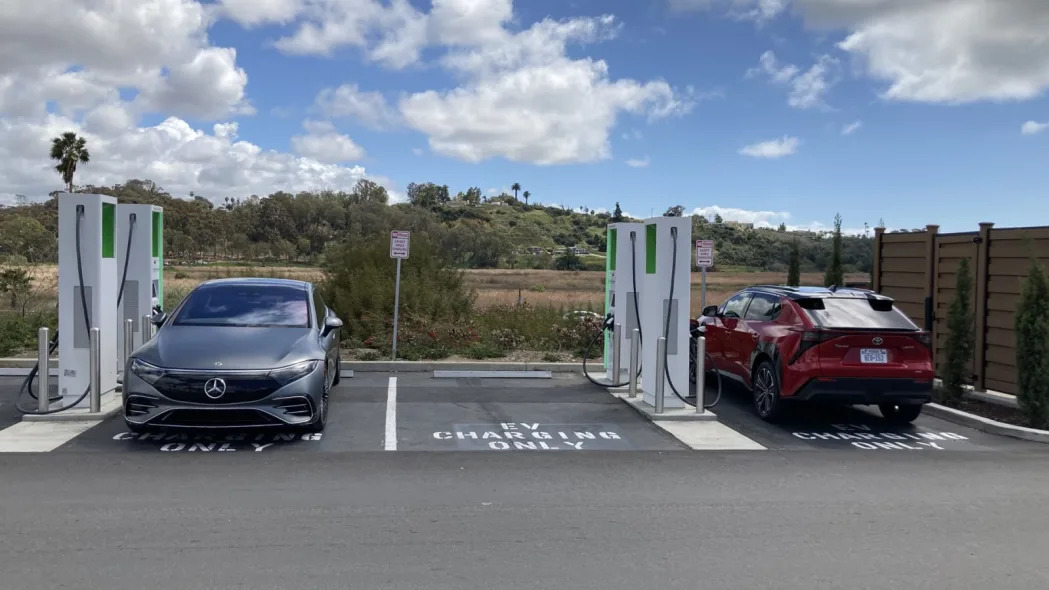
Is the one in the middle simply unoccupied? Or does it not actually work? Pull up and find out!
If she kept her Bolt topped up between the optimal 10-80% range and stopped at a charger for an electron splash any time she needed to stop for something else, she’d be in good shape. Basically, go for a bunch of 30-minute pauses rather than giant full recharges. And definitely don’t assume you can just divide the car’s range by the distance traveled.
So, she could do it. Electrify America has built out its network in this part of the country enough that it wouldn’t be completely foolish, and there are obviously other networks as well (plus the possibility of a charger at a hotel, though beware of hotels advertising “electric car charging” when it’s really a Tesla proprietary charger). Her Bolt also has an above-average amount of range at 258 miles, meaning she’d be in better shape than the drivers of many other EVs.
All that said, this still sounded like a giant pain in the ass to me. Especially when you consider the Bolt is hardly a quick charger these days – in the half-hour Chevrolet says the Bolt EV will recoup 100 miles, a Hyundai Ioniq 5 could regain 200 or more. That’s admittedly the best of the lot when it comes to not-egregiously-expensive EVs, but you get the point. When I’m on a road trip, I like to stop as infrequently as possible and try to check off as many needs as possible per stop. I’ve already documented my dream EV stop scenario. Maybe stopping every 100 miles or so for 30 minutes wouldn’t be so bad, but maybe it would be hair-pullingly atrocious. Don’t know, I’ve never tried.
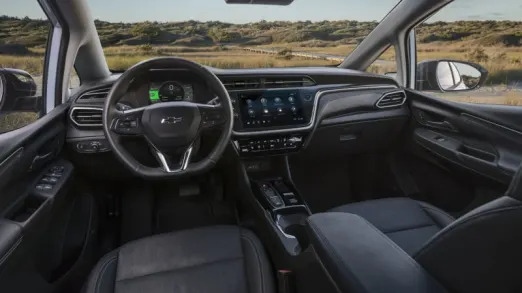

So I decided to try something like it, albeit it in the micro. As car scheduling would have it, an identical 2022 Chevrolet Bolt EV was set to arrive on my doorstep. Although massively updated for ’22 with surprisingly cool styling (versus embarrassingly dorky), a more conventional and sufficiently nice interior (versus one that looked constructed of surplus hot tub plastic, shown above right), and a battery that will no longer burn down your garage, the Bolt continues to boast an above-average amount of all-electric range at 258 EPA-estimated miles. As the math implies, that should be more than enough to travel 178 miles up Interstate 5 from Portland to Seattle, but charging would be necessary at least once along the way. And although an exponentially lighter lift than Portland to Los Angeles, the same crapshoot charging dynamics would represent a brief appetizer of the full meal my sister-in-law was setting herself up for.
Setting out with a full battery and a range estimate of 252 miles, I arrived in downtown Seattle with just under 50 miles left. You can probably blame my set speed being hardly economical, but this wasn’t a scientific range test. I was driving like people drive and with traffic. Given that, my range for the journey ended up being worse than what the car said it would be upon departure. Is any of that different than a gas tank and car’s distance-to-empty gauge? Not really.
So what about charging? I found an Electrify America station just south of downtown Seattle that is miraculously not in the parking lot of a Walmart or Kroger-family grocery store. It had basically taken over the parking lot of a Bank of America in what seemed to be a neighborhood (Georgetown) at the nascent stages of a rebirth. It was also just a few minutes from the absolutely incredible Museum of Flight (pictured above), so the plan was set to see some planes, then drive over to the charger and have some lunch for an hour-plus while the Bolt did its thing.
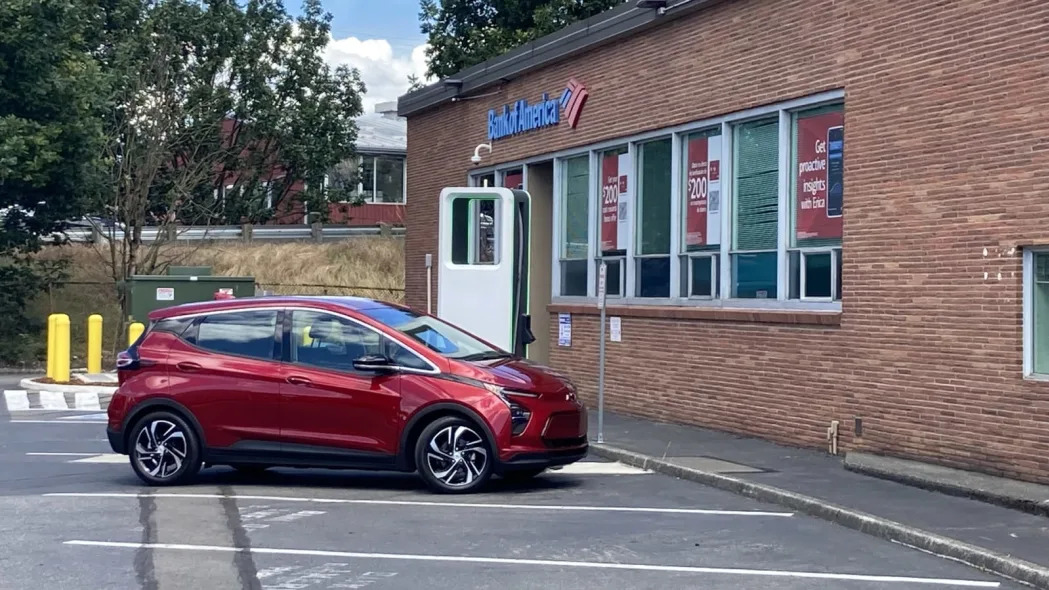
Everything went as smoothly as I’ve experienced, including the process of paying with the app and getting the charger to respond. The total charging time was 1 hour, 16 minutes, the total energy delivered was 50 kilowatt-hours, the max charging speed was 67 kW, and it cost me $21.50. The battery had gone from 16% to 92%, which should’ve been enough to get me home. My breakfast burrito and coffee were delicious.
As I made my way back to Portland the next day, however, I was losing miles in the distance-to-empty meter quicker than I was gaining them in the odometer. Not precipitously so, but as I approached Kelso, Wash., and the site of an Electrify America station I had previously visited (on a Bolt first drive, no less), I calculated that I would arrive with only 18 miles to go. And again, the car’s current trajectory would imply I would arrive with even less than that … and who knows what might be lurking ahead. That does it, pulling the ‘chute.
I stopped at the Kelso Electrify America station, which is also not in a Walmart parking lot, but, rather, the parking lot of the sort of mall featured in Season 3 of “Stranger Things.” You know, the one that killed a small town’s downtown core in 1985, but that is now practically dead itself. Anyway, at least the bathroom is still open. No food court, sadly. Could’ve used some Sbarro.
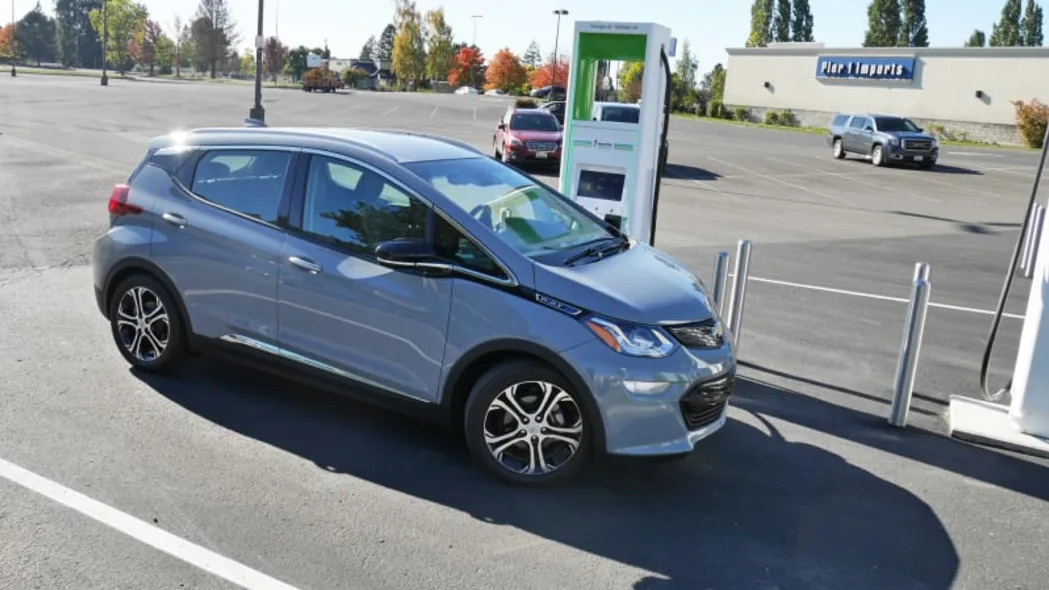
Different Bolt, same charger. The Pier 1 Imports has since closed. This place no longer has everything.
Besides the locale, this charging event didn’t go as smoothly. First, the app just wouldn’t activate the charger. I stood there for five minutes waiting for it to connect, but no dice. I tried just plugging in the car, but still, no connection. I tried a different station. Still no app connection. Then I noticed the screen said something to the effect of “Complimentary charging today.” No explanation as to why or how, but not looking a gift horse in the mouth, I plugged the car in, and bam, the thing started. Of course, I don’t have any stats for that particular stop since the app wasn’t connected, but in 35 minutes, I regained about 112 miles of range. More than enough to get me back home and satisfy whatever errands I needed to do before the car goes back (and leave plenty left in the “tank” for the chap picking the car up).
So that was my experience. I definitely wouldn’t have stopped in Kelso for 30 minutes had the car not needed a recharge (maybe 3 minutes for a bathroom pause, if anything), but the previous day’s stop in Georgetown perfectly fit into my plans. I’m guessing that’s how it would generally go on a longer trip, and as I originally suggested to my sister-in-law, consider it necessary to scout charging locations ahead of time so you’ll know what other pitstop necessities can be accomplished at the charger destination. Simply looking ahead to the next charger on the map as you’re driving along is not recommended and probably dangerous while driving. To that point, the Electrify America Apple CarPlay app is very frustrating to use, does not mirror what’s on the phone’s app, and wouldn’t navigate me to the station in question. Perhaps the Chevy app or the app of a different charge company would be better, but again, that’s what I experienced.
So, was any of this experience helpful to my sister-in-law? Nope! She decided to fly after all, but not because of her beloved new electric car, nor the extra planning needed, nor the fear of problems along the way. Turns out five-plus hours of travel time is a lot more palatable than 15 hours of driving plus X-number of hours charging plus X-number of hours sleeping somewhere along the way. In this case, the answer to “gas car or electric car?” is actually “airplane.”

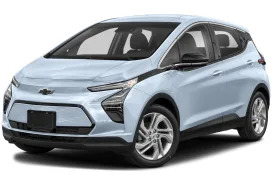

Sign in to post
Please sign in to leave a comment.
Continue